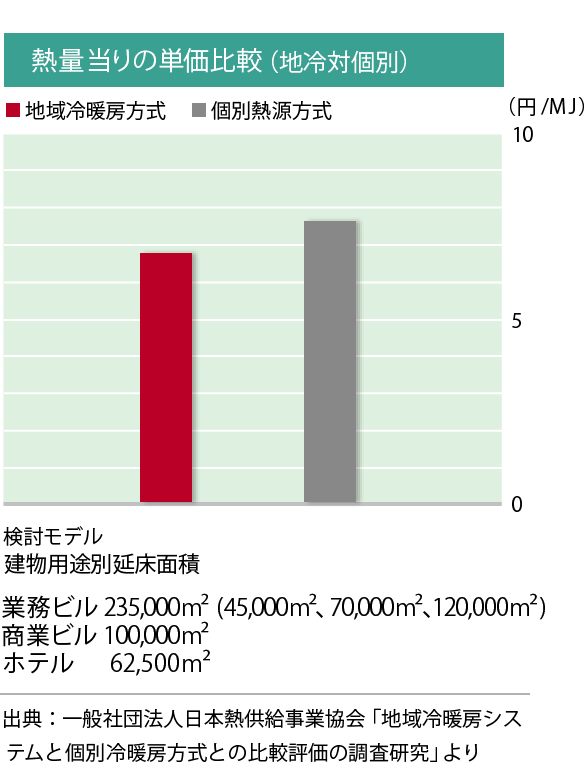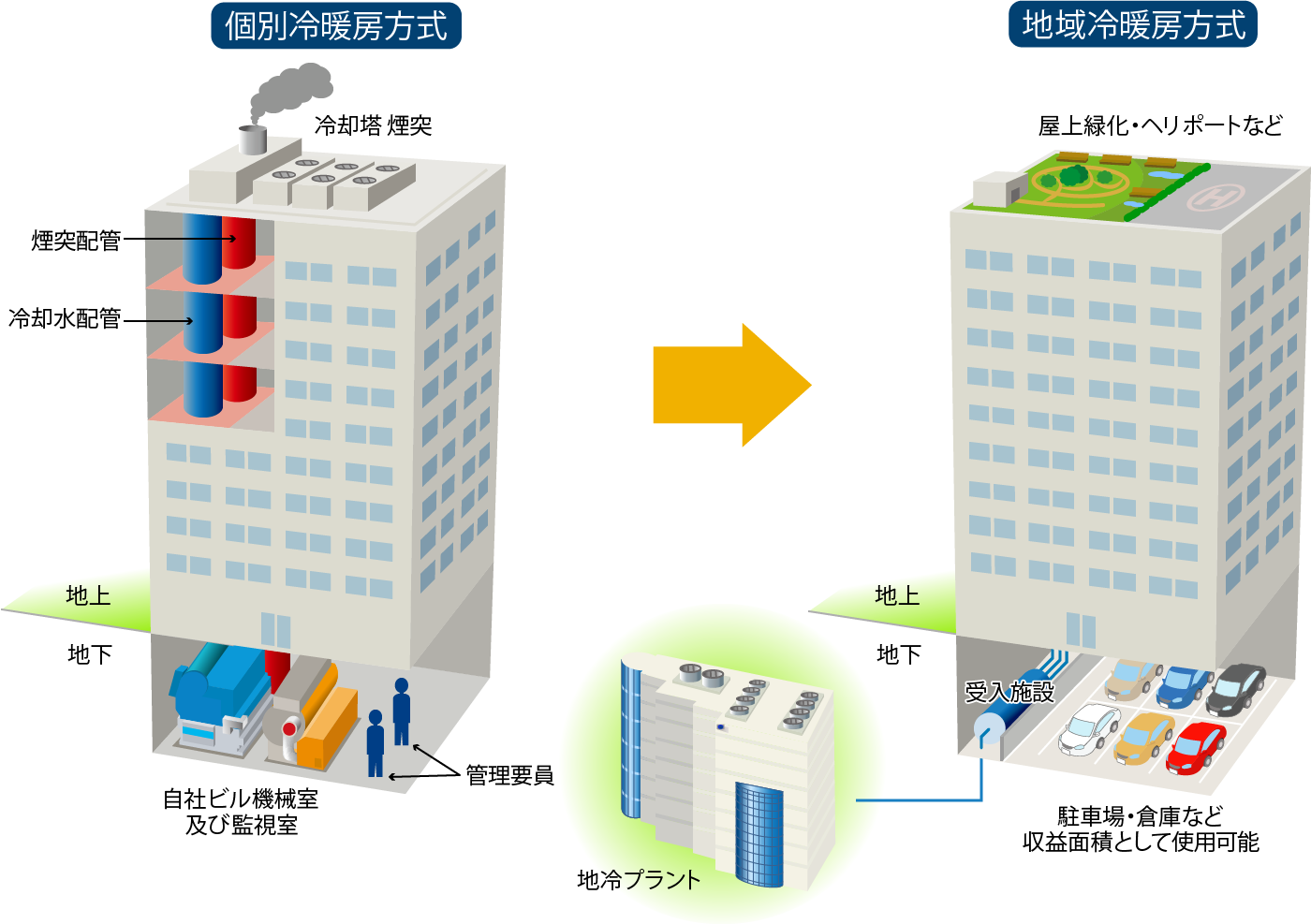In addition to its environmental and other benefits to society, DHC offers a wide variety of benefits to the customers who use it, thanks to enabling of outside sharing of heat sources and centralized management. These include cost savings, reliability, reduced personnel costs and reduced footprint.
Cost Savings
Dispensing with individual heat-source equipment reduces electricity contract rates, slashing electricity costs. Moreover, because less gas and water are used, utility rates and other energy costs are cut.
Building owners in particular enjoy a dramatic cut in initial costs, as they no longer need the capital investment of purchasing heat-source equipment. When unit cost of heating is calculated over a 30-year life cycle, DHC is approximately 10% cheaper than individual heat sources. Also, owners can easily adjust to changes in HVAC load after start of building operation by raising or lowering the contract volume.

Reliability
Like gas and electricity, DHC is a public utility with a duty to provide a stable supply. Central management of heat-source plants by dedicated staff enables customers to receive a supply of clean heating round the clock, 365 days a year.
Moreover, the safety, reliability and scalability of DHC are a powerful selling point for attracting tenants, increasing the value of the real-estate asset.
Reduced Personnel Costs and Reduced Footprint
With DHC, individual buildings no longer require space for installing heat-source equipment, so effective floor space, including rentable space such as storage and parking, to be expanded. At the same time, building management can reduce personnel costs, as it is freed from the headaches of HVAC operation and maintenance and the need to recruit and retain qualified operators for heat-source equipment. Additionally, in terms of building design, unsightly features such as stacks, cooling-water piping and cooling towers are rendered redundant, boosting flexibility in building design (for example, buildings can install green spaces or heliports on roofs). Finally, reduced weight on rooftops can be expected to slash installation and maintenance costs.



